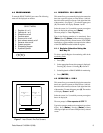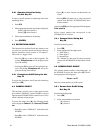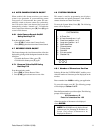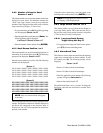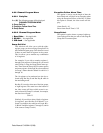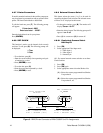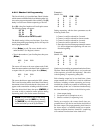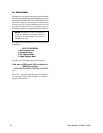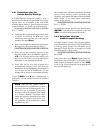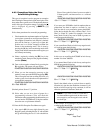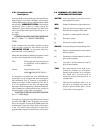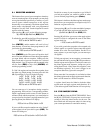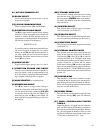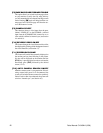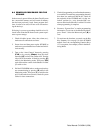
Pelco Manual C1043M-A (2/96) 17
4.9.1 Exceptions using the
Column Specific Strategy
A Column Specific Exception is used to “flag” a
transaction according specific placement of text on the
register ticket. As an example, if the word VOID
normally appears starting 5 spaces from the left during
a void transaction, you would type in the following:
1234567890123456789012345678901234567890
01=>^^^^VOID
A. To find specific text placement on the screen, select
a register by selecting the [F1] key in the
monitoring mode and then press the [register
number], and then [Enter].
B. Turn on the exception column line by pressing the
[L] toggle key. The screen will now display:
1234567890123456789012345678901234567890
C. When you see the transaction come up on the
monitor’s screen, press the FREEZE toggle key
[F6]. This will stop the text from scrolling and
allow you to take a good, close look at the correct
placement of your particular transaction.
D. Write what you see on a piece of paper for a
programming reference. (You will need this
information when programming the information
you see now into the ICI3000P unit.) Use the
numbers above the text as a placement reference.
Use the [<Shift>] and [6] keys simultaneously to
produce the ^ (Caret) symbol (also used for wildcard
searches).
NOTE: When the caret symbol is used as
the first character of exception text, it causes
that line to become Column Specific. Also,
when the Caret is preceded by any other
character it will be recognized by Inter-Check
as a wildcard character. This means Inter-
Check will accept any character of text at that
point. Only ^ symbols used before your
Exception data will be recognized as column
dependent searches.
The example below will search data for any text in the
sixth position starting with D (Wildcard) SK.
Therefore, an exception will appear if the word DESK,
DISK, DUSK, or any other similar combination,
appears on the register.
1234567890123456789012345678901234567890
01=>^^^^D^SK
To accept this Column Specific caret situation press
[ENTER] at the end of the exception to save and
[ESC] to exit the Edit Exception Text menu.
4.9.2 Exceptions using the
Global Exception Strategy
A Global Exception is used to “flag” any text regardless
of the placement on the register receipt. Programming
is done by simply typing in the Exception you’re
interested in on the first line. An example of a VOID
Global Exception is shown below:
1234567890123456789012345678901234567890
01=>VOID
When you’re done, press [Enter] and the cursor will
jump down to the next line (02). At this point you can
either program in another Exception or press [ESC]
to exit. Up to 15 total Exceptions can be programmed
into your ICI3000P unit.



